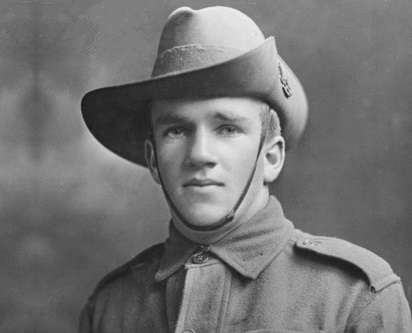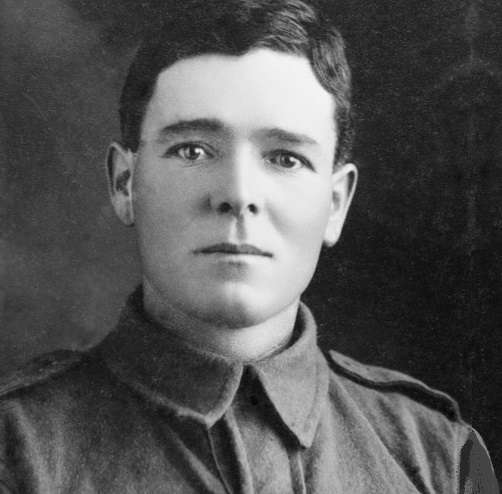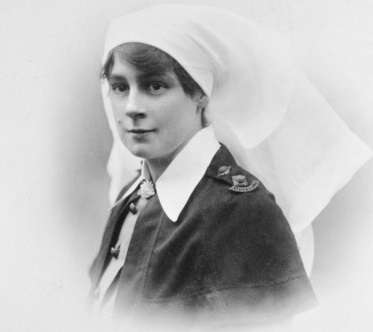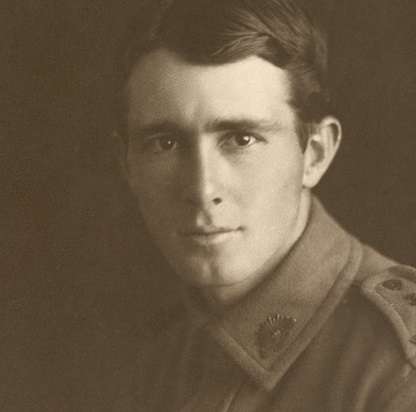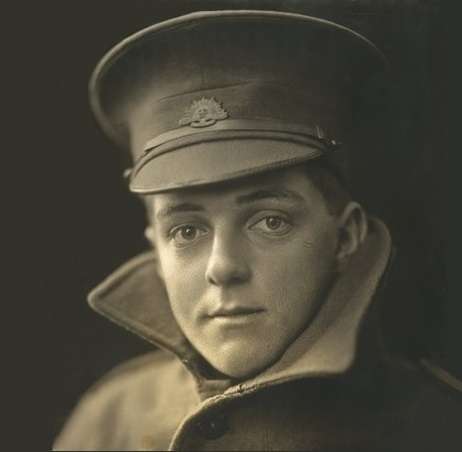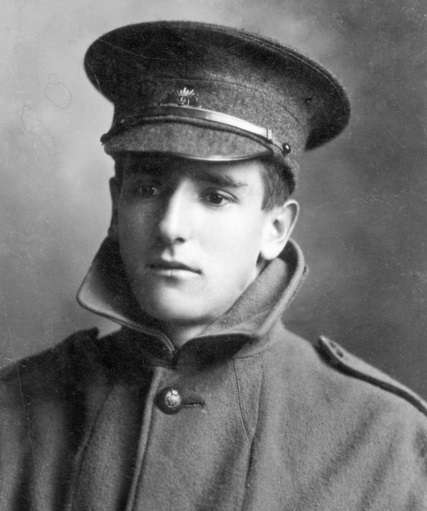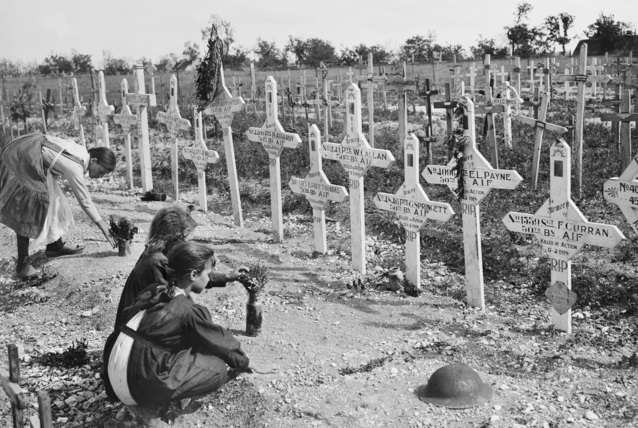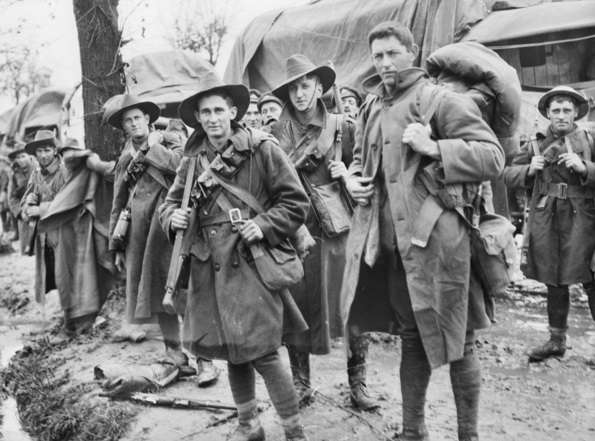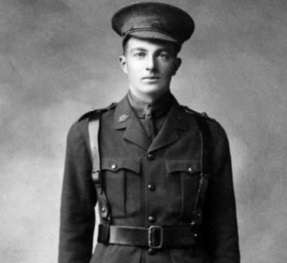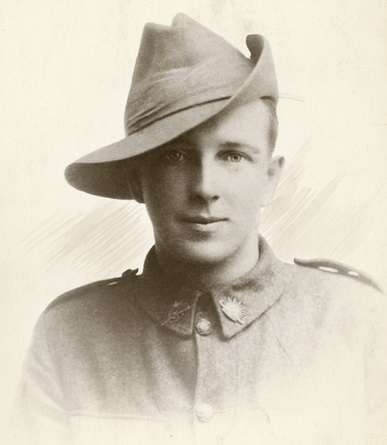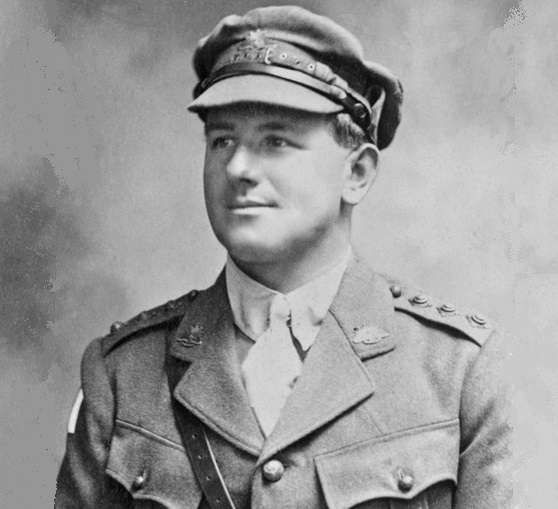Australia On The Western Front WW1
Lest We Forget
From 1916 to 1918, nearly half of all Australians that died in all wars and battles (including WW2), died on the Western Front in less than two and a half years. The image you see above are Australian stretcher bearers and dressers lying utterly exhausted in the mud after 60 hours without rest. The Western Front was hell on earth.
Battle OF Fromelles
In WW1 on The Western Front at the Battle of Fromelles (19th of July 1916), Australia experienced its worst day in history (not just military history). A total of 5,533 casualties (with around 2,000 dead) in one night. The catch cry of the battle was "Don't forget me cobber" due to the fact that so many soldiers were left wounded in no man's land. For the 3 days and nights after the battle, men risked their lives to go into no man's land to save 300 of their wounded mates.
The photograph above is of Private William Frederick Crow.
Private Crow was from Tally Ho, Victoria. He was a 20 year old orchardist before joining up on the 14th of July 1915. He then embarked for overseas with the 11th Reinforcements of the 7th Battalion from Melbourne on the 11th of October 1915 aboard HMAT Nestor. Following further training in Egypt, Private Crow transferred to the 59th Battalion and joined them in the field in France.
He was in the 59th Battalion and was killed in action at Fromelles on the 19th of July 1916. He is commemorated on the VC Corner Australian Cemetery and Memorial, Fromelles, France with others who have no known grave.
Battle for Bullecourt
The first attack launched for Bullecourt on the 11th of April 1917 was a complete failure.
On the 3rd of May 1917, the second attack was ordered across the same ground. This time the Australians broke into and took part of the Hindenburg Line. Unfortunately, no important strategic advantage was ever gained. The two attacks cost the lives of 10,000 Australian soldiers.
In the first attack for Bullecourt, the British command did not wait until they had sufficient artillery resources. Instead, they decided that a dozen tanks would be enough to lead the soldiers through the Germans barbed wire. When the tanks did not arrive on the 10th of April the attack was postponed. Next morning, on the 11th of April, the attack on Bullecourt went ahead. The Australian soldiers were confronted with unrelenting machine gun and artillery fire and were forced back to their own lines while the tanks stood burning on the battlefield. Australia had 3,000 soldiers killed or wounded. Many of those who survived were bitter about such a futile waste of life.
In the second attack for Bullecourt on the 3rd of May 1917, British soldiers and the 2nd Australian Division attacked. Despite heavy machine gun fire and shelling, the Australian soldiers got into the German trenches and fought off counter attacks. The 1st Division then relieved the 2nd, and soon the 5th Division took its turn. In a little over one week the enemy gave up the area. What was left of the Australian battalions were withdrawn to recover. It cost Australia 7,000 dead and wounded to only advanced the line a kilometre.
The photograph above is of Private Richard Burkett.
Private Burkett was a farmer from Narrogin East, Western Australia. He embarked from Fremantle aboard HMAT Miltiades for England on the 7th of August 1916. He then proceeded to the Western Front, France, on the 26th of December 1916 to join the 11th Battalion. Private Burkett was killed in action near Bullecourt, France, on the 6th of May 1917. He has no known grave and he is memorialised on the Villers-Bretonneux Memorial, France. He was aged 32 years.
Private Charles Wesley Burkett, his younger brother, died of wounds received in action on the 16th of September 1916.
Australian Army Nurses
The Australian Army Nursing Service (AANS) was formed in 1903.
2139 Australian Army nurses served abroad in WW1, of whom 25 died. They attended to all wounded Australians in all major campaigns, including Lemnos Island (off Gallipoli), Egypt, Salonika (Greece), England, France and Belgium.
Besides working in hospitals, the nurses served in casualty clearing stations near the front line and on hospital ships and trains.
On the Western Front nurses suffered from severe infections, especially to their hands, from the festering and discharging wounds they treated. The nurses also caught the diseases of the trenches like measles, mumps, typhus, influenza and dysentery. Some nurses were wounded from shrapnel.
Many Australian civilian nurses volunteered for active service during WW1, working with other organisations, such as the Queen Alexandra's Imperial Military Nursing Service (QAIMNS), the Red Cross, or privately sponsored facilities.
Nurses worked long hours and in shocking conditions and the women witnessed first-hand the suffering of countless lives in the horror of the Western Front. Unlike any war Australia has fought in before or since, the Western Front took 46,000 Australian lives in just over two years and wounded or gassed over 132,000 more. Many soldiers being wounded more than once. Australia's casualty rate was around 65 per cent and was the highest in the British Empire.
The photograph above is of Sister Martha Ann King.
Sister King was born at Kensington, South Australia. She trained at the Adelaide Hospital. Sister King enlisted on the 6th of August 1915 and served in Lemnos, Egypt, England and on the field in France. She became sick with diphtheria in November 1915, and in 1918 became sick with influenza and pneumonia. She caught influenza again in February 1919. Sister King returned to Australia on the 4th of July 1919.
Battle Of Pozieres
One of the battles Australians were involved in at the Battle Of The Somme was at Pozieres and Mouquet Farm. Pozieres is small village situated in the Somme valley in France. The 1st, 2nd and 4th Australian Divisions endured shocking casualties from the 23rd July 1916 to the 3rd September 1916 at Pozieres and Mouquet Farm. In all, the three Australian divisions suffered 23,000 casualties. All in less than seven weeks. 6,800 Australians were killed or died of wounds.
The photograph above is of Private Douglas Ackland Meggy, who was in the 3rd Battalion, AIF. He was killed in action at Pozieres, France, between the 22nd and 27th of July 1916. He was 20 years old.
Private Meggy came from Neutral Bay, Sydney NSW.
The battle of Broodseinde Ridge
The battle of Broodseinde Ridge (in Belgium) was the third operation in the Passchendaele campaign (3rd Battle of Ypres) of 1917.
The attack to capture the village of Broodseinde began before dawn on the 4th of October 1917. It was a large operation, involving twelve divisions, which included British, Australian and a New Zealand Division, attacking along a 10 kilometre front. In the centre was I and II Anzac Corps, composed of three Australian divisions and the New Zealand Division.
Before the attack began, a seventh of Australians soldiers became casualties through heavily enemy shelling. The Germans had also launched an attack of their own and the Australians were confronted with enemy troops coming towards them. Our soldiers proceeded on through the German assault waves and gained all their objectives along the ridge. The cost was heavy with the enemy's pillboxes difficult to overcome. The Australian divisions suffered 6,500 casualties.
After the attack, the rain and mud made artillery movement on the battlefield difficult. On the 9th and 12th of October Australian soldiers attacked towards Passchendaele. The enemy's counter attacks pushed back the small number of Australians who had reached the outskirts of Passchendaele. Depleted and exhausted, the Australians were replaced by the Canadian Corps, which took Passchendaele on the 6th of November, which finalised the Third Battle of Ypres. It cost the Canadians 16,000 casualties.
The push for Passchendaele Ridge on the 12th of October also cost 845 New Zealand lives and 2700 were wounded. It was the New Zealand Division’s greatest disaster.
The photograph above is of Private Robert Burton.
Private Burton was from Yankalilla, South Australia. He enlisted in February 1916 and served on the Western Front as a member of the original 43rd Battalion which left Australia in June 1916.
Private Burton was taking cover in a shell hole during the attack on Broodseinde Ridge on the 4th of October in 1917 when a shell landed nearby, killing him instantly. He was only 19.
Australian soldier killed at the Battle of Fromelles
The photograph above is of Private Alfred George Sinigear, 32nd Battalion.
He was clerk from Blackwood, South Australia prior to enlistment.
He embarked on HMAT Geelong on the 18th of November 1915. Later promoted to the rank of Lance Corporal, he was killed in action at the battle of Fromelles on the 19th of July 1916. He was only 19 years old.
The name Sinigear died out in Australia with the death of his mother in 1938.
French children tending graves at Adelaide Cemetery of Australians killed in battle on the Western Front
The photograph above was taken on the 29th of August 1919 in France in the Villers-Bretonneux area.
Capture Of Boursies WW1
On the 8th of April 1917, the 12th Battalion was tasked with the capture of Boursies, on the Bapaume-Cambrai road. The attack was a deceptive thrust to mislead the German forces on the direction from which Hermies was to be attacked.
Throughout the 8th of April, the Australian soldiers were subjected to heavy shellfire from German forces. Under heavy machine gun fire the Australian soldiers captured Boursies. Other villages captured by the Australian soldiers were Hermies and Demicourt.
The 12th Battalion was among the first infantry units raised for the AIF during the First World War. Half of the battalion was recruited in Tasmania, a quarter was recruited in South Australia, and a quarter from Western Australia. With the 9th, 10th and 11th Battalions it formed the 3rd Brigade.
The photograph above is of Lieutenant Raymond Sherwin MC.
Lieutenant Sherwin was killed in action at Boursies, France on the 8th of April 1917 and is commemorated on the Australian National Memorial at Villers-Bretonneux, France with others who have no known grave.
Second Battle of Villers-Bretonneux
The Villers-Bretonneux Australian National Memorial is a WW1 memorial. It is near the town of Villers-Bretonneux, in the Somme region of France. Listed at the memorial are 10,773 names of soldiers of the AIF with no known grave. The soldiers were killed from 1916 to the end of the war on November 11, 1918. It is also the Australian National Memorial to all the Australians who died on the Western Front in WW1.
In front of the memorial are the graves of over 770 Australian soldiers, as well as those of other soldiers from the British Empire involved in the campaign.
The location was also chosen in commemoration of the action by Australian soldiers in the Second Battle of Villers-Bretonneux.
In March 1918, the Germans launched a major offensive to take the town of Amiens. In that process they captured the town of Villers-Bretonneux on April 23.
Two Australian brigades were asigned the task of retaking the town with a plan to surprise the Germans in a night attack and encircle them and trap them.
It started with two battalions attacking from the south towards the east of Villers-Bretonneux and at the same time three battalions attacked from the north.
The Australian soldiers attacked at 10pm on April 24, taking out the German machine guns then fighting the enemy house to house.
Three years after the Australians came ashore at Gallipoli, and as the sun came up on April 25, 1918, the Australians had cut through the enemy's positions and the Australian and French flags were raised in Villers-Bretonneux.
Taking the town cost 1,200 Australian lives and the French people have never forgotten with the words 'Do not forget Australia' featured on the town's school blackboards.
The photograph above is of Private Alexander Ferguson Fraser.
Private Frazer was from Brisbane, Queensland. He was an overseer before he enlisted in November 1915. He left Australia for England with the 2nd Reinforcements in April 1916. He arrived in France in May 1916 for service on the Western Front. Private Fraser contracted malaria and was returned to England in April 1917. He returned to his battalion in September 1917.
Private Fraser was listed as missing on the 24th of April 1918 during the 52nd Battalion's attack on Villers-Bretonneux. Private Fraser was last seen having been placed unconscious in a shell hole while being attended to by a British stretcher-bearer. He was later listed as having been killed in action, aged 23, and has no known grave.
Australian soldier killed in the last months of the war
The photograph above is of Captain Arthur Thomas Rogers, 32nd Battalion. He was a soldier from Perth, Western Australia, prior to enlistment, he embarked as a Lieutenant with D Company from Adelaide on the 18th of November 1915 aboard HMAT Geelong for Suez.
The battalion relocated to the Western Front, France, during June 1916. Lt Rogers was wounded in action at the Battle of Fromelles on the 20th of July 1916 and was evacuated to England for treatment and recuperation. After discharge from hospital he was transferred to the 8th Training Battalion and served as the Adjutant from late October 1916 until late January 1917.
He was promoted to Captain on the 29th of January 1917 and rejoined his battalion near Fricourt on the 8th of February 1917.
He was awarded the Military Cross for his initiative, courage and devotion to duty in operations near Fontaine-les-Cappy on the 27th to the 29th August 1918.
Captain Rogers was killed in action near Nauroy, France, on 29 September 1918. He was aged 29 years.
The video above titled 'You Never Came Home', is a memorial to all the Australians who died on the Western Front in WW1.
The words in the video were written by Peter Barnes in 2015.
This webpage was created by Peter Barnes on the 20th of July, 2016.
Information and photographs mainly came from the Australian War Memorial.
You can email Peter at peter@peterbarnes.net.au or phone him on 0418 82 7756.
Other websites include: Business Advertising Online, ANZAC Day, Peter Barnes, Ballarat Victoria, Battle Of Fromelles, Australian War Heroes
